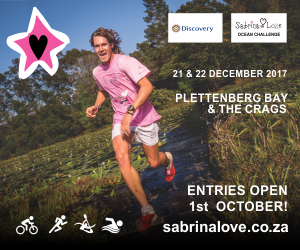
Obstacle course at the CrossFit Games 2017. Photo: CrossFit Games
CrossFit and obstacle course racing (OCR) have become two of the world’s fastest growing sports over the last decade. Both have been revolutionary in their unorthodox approach to fitness, and have sent a clear message that road races are no longer the only option for those looking to become healthier and more active.
It’s no coincidence when CrossFit athletes step into the gym with obstacle course racing shirts.
“Both CrossFit and OCR have their communities, but they often intersect. They’re like sisters in the fitness industry. It’s OK to do just do one and not the other, but eventually, it’ll be hard not to explore the other side.
CrossFitters will find a weakness on the obstacle course and OCR athletes will find where they lack if they start CrossFit. An obstacle course race serves as a great end goal for any athlete, including CrossFitters of all levels.” – The Mud Run Guide
Obstacle course racing challenges an athlete to complete a set course by foot, which involves overcoming carefully chosen challenges that are in the form of obstacles.
It has been deemed as the fastest growing sport in the world, and over the past three years has captured the hearts South African adventure seekers in particular. Thousands of participants sign up for this sport to test their functional fitness, trail running abilities and ultimately, their sense of grit.

Brooke Wells, leading female CrossFit athlete, attempts an obstacle at the CrossFit Games 2017. Photo: CrossFit Games
OCR embodies all the fullness that comes with a multisport lifestyle. It’s the perfect combination of strength and endurance; trail running and functional fitness.
But in May 2017 the industry was disrupted. Tough Mudder (one the world’s leading OCR series) announced that obstacle course racing was about to take a giant leap.
The creation of a new event was introduced – Tough Mudder X. It invited a select pool of 200 athletes from multiple disciplines (mainly CrossFit and OCR) and pit them against each other in what was called ‘The Toughest Mile on the Planet.’
Not only did they face 10 of the toughest world-class obstacles, but were also put through 10 workout zones that included CrossFit movements like thrusters, atlas lifts, pull ups and burpees.
And it wasn’t just for fun either. The hunt to find the “toughest, fastest and fittest” athlete would come with the reward of $25,000.
Fast forward to July 2017, and the CrossFit Games are about to start. This is the pinnacle event of this sport, and athletes wait in great anticipation for the release of the weekend’s workouts. Can you guess what was incorporated?
Yes, an obstacle course. CrossFit athletes were suddenly dropping the barbell and jumping onto monkey bars.
It is becoming apparently clear that CrossFit and obstacle course racing have a lot more in common than their sense of camaraderie. The gap between pure fitness competitions and world-class obstacle courses is being closed.
We chat to some of South Africa’s leading OCR athletes that have experience in both fields to better understand the combination of the two sports.

Trevor Lagerway at the Impi Challenge in April 2015. Photo: ZC Marketing Consulting
CrossFit can help you become a better OCR athlete
is a specialist obstacle course runner. He is also the owner of FITstrong, a functional training facility with a military obstacle course.
He talks about the benefits that functional, CrossFit style training has for OCR athletes:
“The sports go hand-in-hand. If you’re an OCR athlete, you need to be in a gym doing strength training, strength endurance, explosive work, plyometrics, agility and mobility. And obviously that’s where CrossFit comes into the mix.
The term ‘CrossFit’ is just a brand. Functional training has been around for a long time, so it’s more about incorporating that into your training regime to prepare for the obstacle course.
A CrossFit athlete preparing for OCR needs to set time aside and focus on running. You should be able to do 21km race comfortably as an elite athlete before you tackle any obstacles.
MORE: Get the OCR balance between strength and cardio

South Africa’s leading OCR athlete, Thomas van Tonder, doing the Farmer’s Carry at Warrior Race 2016. Photo: ZCMC
Movements to focus on
Any bar work is vital. CrossFit focuses on things like pull ups, muscle ups, toes-to-bar, which all plays a huge role in developing the foundation of body strength required.
But it doesn’t end there. You also need to incorporate a lot more hanging into your functional training. Spend some extra time on the bar doing stuff like hand releases and dead hangs . I’d also highly recommend taking up rock climbing and bouldering to build up your grip strength.
Carrying weights will prepare you for obstacles like the Farmer’s Walk. You can use medicine balls, wall balls and slam balls to mimic a sand bag, and then run with these weights on your shoulder.
Movements like deadlifts will help your grip strength, but also strengthen your hamstrings and back. Explosive work like squats and box jumps are very useful. And then obviously rope climbs develop upper body strength and grip.

Wall balls (a squat to press movement) are a big part of CrossFit, Muscles worked during the exercise include the quads, glutes, calves, hamstrings, abs, lower back, chest, front deltoids, back deltoid, biceps and triceps. So, pretty much every muscle group you’ll ever want to work.
Recommended WODs
There are certain workouts of the day (WODs) that are particularly useful for OCR athletes. These are a measure of fitness and a benchmark that can be monitored over time to record an increase in power:
Fran
For time: Perform 21 thrusters followed by 21 pull ups, 15 thrusters followed by 15 pull ups, and 9 thrusters followed by 9 pull ups (as fast as humanly possible).
Murph
For time: Complete a 1.6km run, 100 pull ups, 200 push ups, 300 squats and then a 1.6km run.
Cindy
Complete as many rounds as possible in 20 minutes: 5 pull ups, 10 push ups, and 15 squats.

Sabrina Daolio at #Warrior7 2016. She does both CrossFit and obstacle course racing. Photo: ZC Marketing Consulting
It’s not all about lifting heavy weights
Ask someone if they’d like to start CrossFit, and you’re likely to get a response like “I don’t want to life heavy weights!”
Good news is that weightlifting isn’t the only thing CrossFit focuses on, and you’re given the choice to lift as heavy as you feel fit.
is currently one of the OCR front runners in South Africa. She achieved a maiden Warrior Race title in 2017 and is a regular on the podium.
She trains at in Johannesburg, which is both a CrossFit and OCR facility. Here’s how CrossFit has helped her train for OCR:
“I love the Spartan Gone Mad classes we have on a Saturday at BattleRush. It combines obstacles with CrossFit and it feels great to be effective in both. Combining these sports brings diversity and encourages athletes in both fields to come together for a great ‘sufferfest’.
CrossFit helps with anaerobic training and strength conditioning. I’ve found this is particularly useful in sprint obstacle races, which The Warrior Race introduced this year, where we simulate short bursts of work.
It depends on the phase of training, but I generally do three CrossFit sessions a week. I was reluctant to start CrossFit initially, but my strength has improved dramatically. I actually enjoy weightlifting, especially deadlifts. Movements like strict press have also helped me gain strength in my upper body, so I definitely believe that CrossFit has its place.”

Dead hangs on the bar will help with obstacles like this. #Warrior7 2016 which was held in Meerendal
When you’re not so into running
It’s no secret that to be a competitive OCR athlete, you need some serious trail running skills. This is the aspect of OCR that many people find most challenging, especially if they’re not so into running long distances and more into conquering obstacles.
There are options to ‘scale’ the run in some OCR races if you enter a different category, or you can opt for the sprint course.
Joburg-based athlete started out doing CrossFit, and quickly discovered his passion for OCR. He is more of a middle-distance runner, however, and did not enjoy the amount of running as much as the test of functional strength that this sport presented:
“I love how Crossfit and OCR complement one another, and I can’t believe that it has taken so long to finally start combining the two on a competitive level.
I was already doing Crossfit when I got involved with OCR and was instantly hooked by the obstacles. The running not so much, but it was worth grinding through it to get to play on the obstacles.

Almero Oosthuizen tackles the tyre flips. Warrior Race 2015.
I started getting more and more into OCR and wanted to see how far I could take it. I managed to go to World Champs in 2016, but after seeing what the international standard of this sport required, I started to lose interest.
OCR World Champs is 95% running, and the obstacles (compared to our local races) weren’t as challenging as I’d hoped. So I decided to shift my focus back to CrossFit, because it’s what I feel I’m better suited towards genetically.
But now that they’re starting to combine the two sports it opens up a whole new world. Top level elite CrossFitters often battle on the technical ninja warrior like obstacles, and top level OCR athletes would find it difficult to do a proper RX CrossFit workout.
Both sports are on the hunt for ‘the ultimate fit athlete,’ so putting a race together that incorporates different skills is a great way to do that.”
It’s all about balance
At the end of the day, the test of endurance and strength is what makes OCR what it is. Running and overcoming obstacles using our head and hands is what appeals to our inherent being. So should OCR ever depart from it’s traditional racing style? Never.
But shaking things up and incorporating additional events like Tough Mudder X could take this sport to new heights and reach an even greater crowd of people looking to put their fitness to the test competitively.
One final parting shot from : “I think to be really competitive, people will mostly sway to one side or the other. It’s great to add diversity and another element of strength and endurance to OCR.
But obstacle course racing won’t ever completely move away from its traditional stance. I love obstacle dominant races, so from a personal perspective it would be great to take on a different challenge every now and then”
Other article you’ll like
What it takes to be an OCR champion
Claude Eksteen blitzes his way to OCR World Champs



No comments yet.